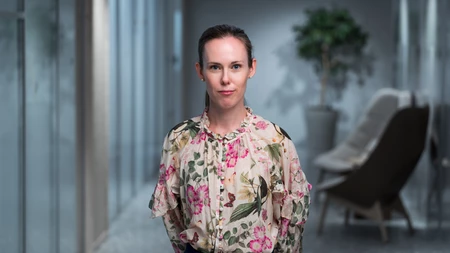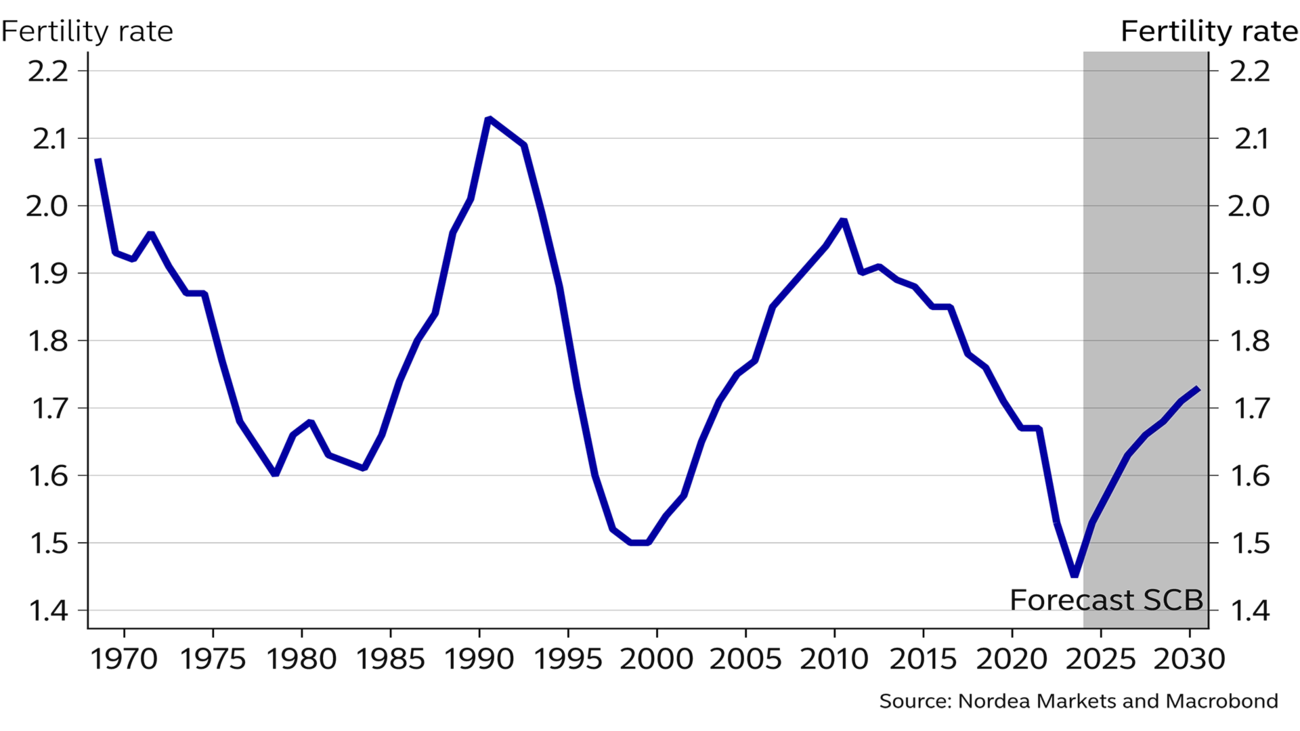
- Name:
- Susanne Spector
- Title:
- Head of Macro Research Sweden, Nordea
Last year, Sweden saw the lowest population growth in more than 20 years. Much suggests that population growth will remain subdued in the coming years. This will impact the need for new homes, other investments as well as the labour market.

Population growth slowed to 0.3% in 2023, the lowest rate since 2000. The population grew by 30,200 persons, corresponding to around 14,000 households. This implies that the number of housing starts was twice as many as the number of new households last year, despite the sharp decline in residential construction.
Owing to the lower population growth nationwide, the population decreased in two out of three municipalities and in around half of the counties. The lower population growth nationwide is first and foremost a consequence of lower net immigration and fewer childbirths. Net immigration has decreased by 80% compared with 2016; it accounted for two thirds of the population increase in 2023 whereas the birth surplus accounted for one third.
Moreover, the fertility rate (the number of children born relative to the number of women of childbearing age) has dropped since 2010, and the decline accelerated in 2022 and 2023 (see chart below). Last year, the fertility rate was 1.45 – the lowest level on record since registration start-ed in 1749 – even though the group of primary childbearing age (30-34) is record high.
The rapid decline in the fertility rate is not only a Swedish phenomenon; it has also occurred in many other countries over the past three years. One explanation may be that higher living costs affect potential parents’ inclination to have children.
The number of children aged 0-4 has fallen by 8% since 2018. This age group is the smallest in 14 years and accounts for the lowest share of the population in 150 years except for 2000–2003. Although the fertility rate is expected to rise again in coming years, fewer births will reduce the need for preschools and schools going forward.
Number of children per woman of childbearing age

Much suggests that last year’s low population growth was not temporary. Instead there are many reasons to expect lower population growth during the 2020s.
Statistics Sweden’s population forecast last year implied population growth close to 0.5% per year up to 2030. At that time, they assumed a gradual fertility rate recovery and net immigration of nearly 40,000 per year. If net immigration had been set to 0, population growth would only average 0.1% per year, corresponding to an average of 6,000 new households per year. Assuming that net immigration remains at the same level as in 2023 (20,000 persons), the annual growth rate will be around 0.3%, corresponding to 15,000 new households per year. This is also our baseline scenario.
Much suggests that population growth will continue at a slower pace during the coming decade.
Lower population growth affects many parts of the economy. It is unlikely that construction activities will bounce back to the levels seen in 2021 and 2022 with nearly 70,000 and 55,000 housing starts, respectively, even if the population grows faster than expected.
Many municipalities need to review their investment plans and more municipalities will have fewer citizens in future. Previously rapidly growing municipalities will also see a slowdown. This may intensify the competition between municipalities about growth. In the long term, public finances will also be impacted negatively when the population share of elderly grows.
Lower population growth implies lower potential economic growth. The investment need will decrease, and the need to expand groceries, stores and restaurants will, all else equal, diminish when the population does not grow as rapidly as previously.
In the long term, the population size has no effect on unemployment or the employment rate, but when fewer enter the labour market, unemployment may fall initially due to less competition for jobs. Labour shortages in the coming years may thus worsen when the working-age population hardly increases at the same time as labour shortages continue to be a challenge. In the longer term, the need for labour will decrease in tandem with the declining potential growth.
This article first appeared in the Nordea Economic Outlook: Falling into place, published on 24 April 2024. Read more from the latest Nordea Economic Outlook


Sustainability
Amid geopolitical tensions and fractured global cooperation, Nordic companies are not retreating from their climate ambitions. Our Equities ESG Research team’s annual review shows stronger commitments and measurable progress on emissions reductions.
Read more
Sector insights
As Europe shifts towards strategic autonomy in critical resources, Nordic companies are uniquely positioned to lead. Learn how Nordic companies stand to gain in this new era of managed openness and resource security.
Read more
Open banking
The financial industry is right now in the middle of a paradigm shift as real-time payments become the norm rather than the exception. At the heart of this transformation are banking APIs (application programming interfaces) that enable instant, secure and programmable money movement.
Read more